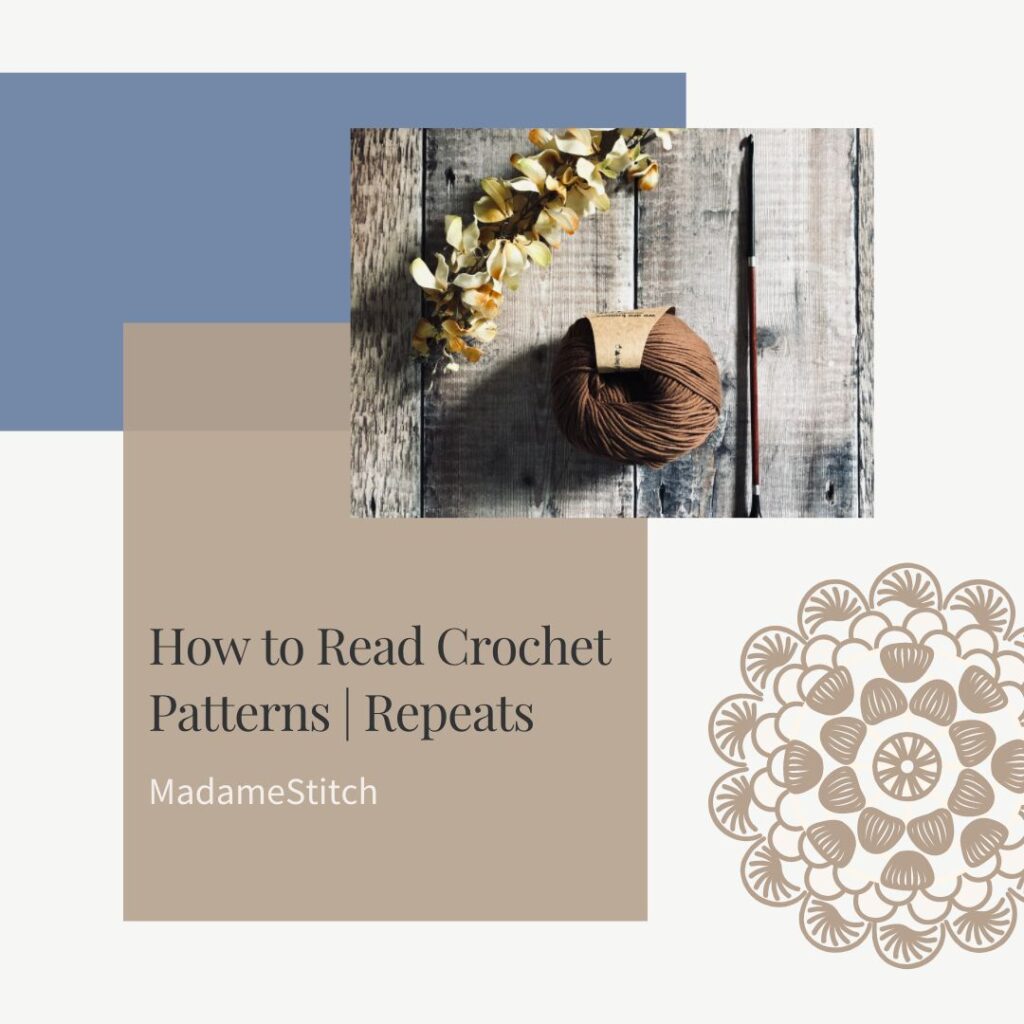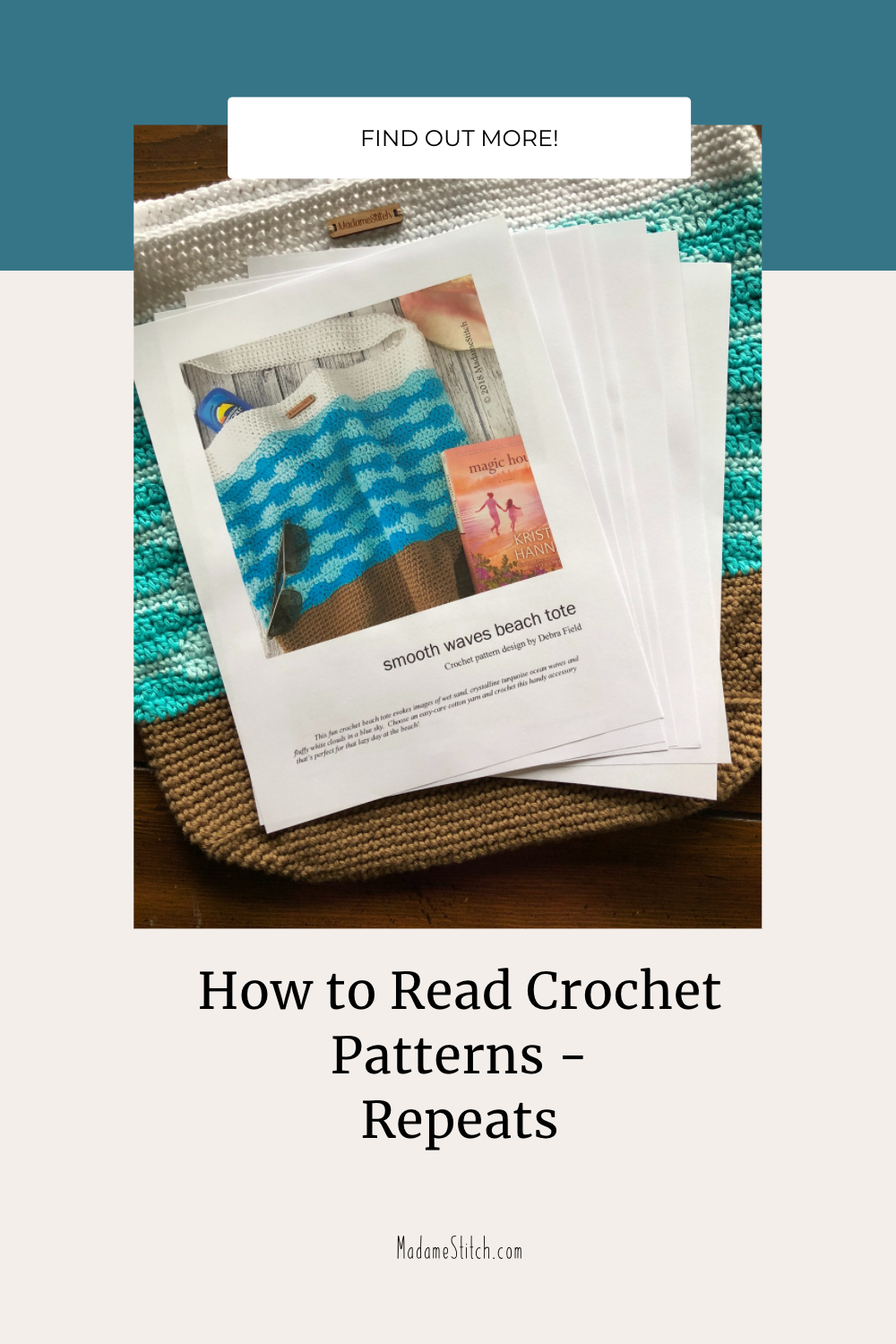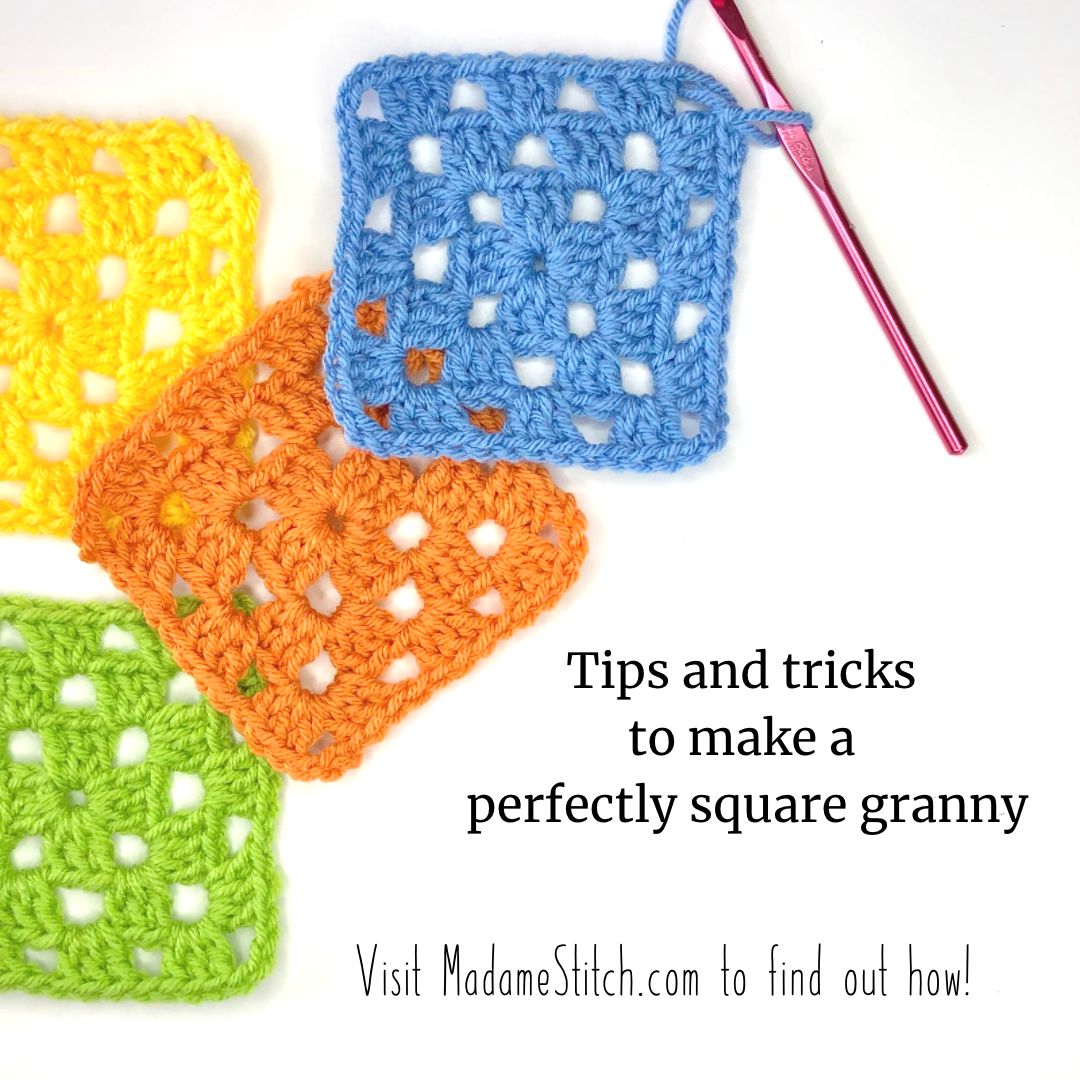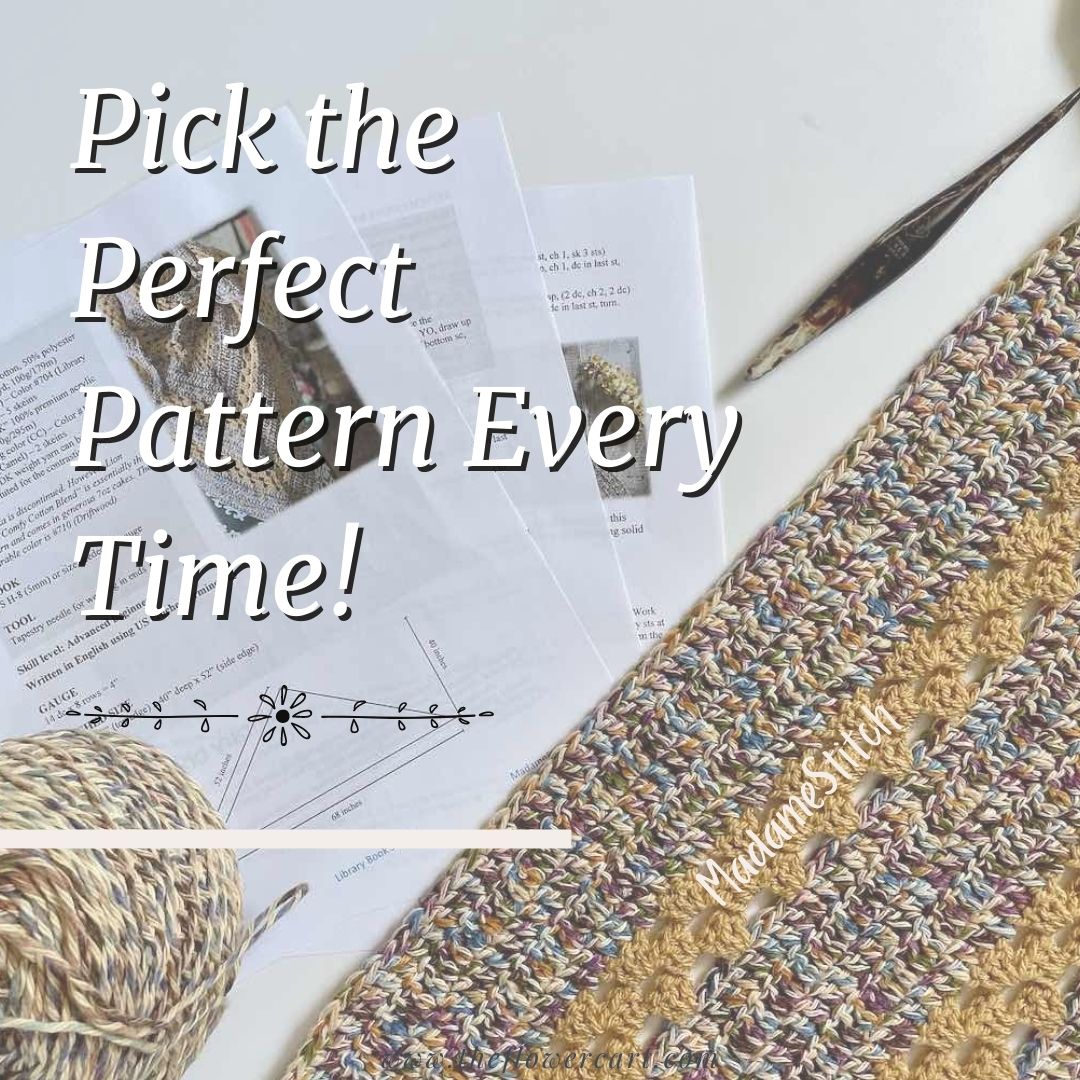Repeats | How to read them in a crochet pattern
So far in our journey into how to read crochet patterns, we’ve talked about what all the parts of a pattern mean, and common abbreviations and terms you should know. Now it’s time to tackle one of the more perplexing parts of pattern instructions – how repeats are written. It can be confusing so let’s see if we can decipher those parentheses, asterisks and brackets.

Asterisks, Parentheses, and Brackets…oh my!
Why would a pattern writer use these symbols to signify repeats? The answer is simple, really. Just like in music where repeat signs point you back in the music to do it all over again, repeats in crochet patterns are marked to save writing everything out. Once you get the hang of seeing repeats and interpreting what they mean, it becomes much easier to read.
If you’re still having trouble figuring out what all this means, try writing out the repeated instructions long hand to see if it makes sense with what you’re seeing in the pattern instructions. You won’t have to do that very many times before it all begins to make sense.
Asterisks *
Asterisks are used to indicate a portion of the instructions that will be repeated, usually to the end of a row. Normally, what precedes the asterisk will be worked only once, then the repeat begins following the asterisk. Here are 2 examples of how the asterisk is used.
Ex 1
Row 2: Dc in next 4 sts, * ch 1, skip next st, 2 dc in next st, ch 2, skip next 2 sts, 4 dc in next st; rep from * to the end of the row.
This means that the steps following the * should be repeated until you reach the end of the row.
Ex 2
Row 2: Dc in next 4 sts, * ch 1, skip next st, 2 dc in next st, ** ch 2, skip next 2 sts, 4 dc in next st; rep from * across, ending last rep at **.
Work this repeat exactly like Ex. 1 except your last repeat will end at the ** instead of working all the way the semi-colon.
Parentheses ()
When parentheses are used to indicate a repeat, the instructions will look like the following:
(3 dc, ch 2, sc, ch 2, 3 dc) 2 times, then sc across.
This means to work 3 dc, ch 2, sc, ch 2, 3 dc, 3 dc, ch 2, sc, ch 2, 3 dc, then sc in each of the remaining stitches in the row.
Other uses for the parentheses are as follows:
- To indicate a group of stitches worked in the same place or same stitch. Ex. – (3 dc, ch 3, 3 dc) in corner space
- To indicate the stitch count of a particular row. Ex. – (15 hdc)
- To indicate stitch counts for garment sizing. Ex. – ch 65 (68, 71, 74, 77, 80)
- To indicate the front of the work when working in rows. Ex. – Row 1 (RS):
Brackets []
Brackets are used to indicate repeats in the same manner as parentheses. However, a pattern writer will not use brackets in one place and parentheses in another to mean the same thing within the same pattern instructions.
One of the most important uses for brackets is indicating a large block of work to be repeated. In this case, both parentheses and brackets are employed, and any parentheses will be within the brackets. For example:
[(3 dc, ch 2, 3 dc) in next ch-2 sp, ch 1, 3 dc in next ch-1 sp, ch 1] 3 times
This means to work what’s within the parentheses in the same ch-2 space, and repeat everything within the brackets the number of times indicated which is 3 times.
Still confused?
These arbitrary examples might not be enough to adequately explain how repeats work. Sometimes you just have to put hook to yarn and try working through a repeat to fully understand it. Remember, there is no shame in frogging (you’ll find that term in Pt 2!). And, if you truly get frustrated and can’t figure it out, take it to your LYS and I’m sure someone there will be more than happy to help you work it out. The more you work with repeats in pattern instructions, the easier it becomes. I promise 😊

Stay tuned for the next installment when we’ll look at the similarities and differences between US and UK terms. In the meantime, check out MadameStitch on Instagram and Pinterest. And, don’t forget to sign up for the email list below so you don’t miss a thing!



